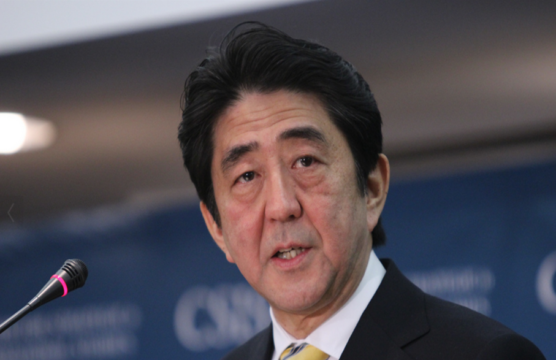
Abe’s Agenda in Latin America
Prime Minister Shinzo Abe’s tour of Latin America this summer will be the first Japanese state visit to the region in a decade.
Q: China’s ambassador to Chile, Yang Wanming, told newspaper China Daily that the Asian nation should look to Latin America to make up for declining demand from developed markets. Chinese exports to the region grew 12 to 15 percent last year, and it “is now a strategically important market,” he said. How significant is Latin America as an export destination for China? Are business and government leaders actively looking to the region to expand trade? Where is the Chinese economy headed next year and in the mid-term, and how will that affect Latin America?
A: Erik Bethel, managing partner of SinoLatin Capital: “Latin America’s 19 countries, 575 million people and $6.8 trillion GDP offer a tantalizing opportunity for Chinese exports. China is already a major exporter in Latin America, but there is a lot of room for further growth. In order for this to happen, Chinese firms need to view the market not on a regional basis, but rather country-by-country. There is no question that Sino-Latin relations have been strengthening at a rapid pace, as demonstrated by China’s direct investment in the region ($175 billion in cumulative FDI as of September), membership in the Inter-American Development Bank and the many bilateral visits that have taken place. However, Chinese firms need to approach the region with the understanding that Latin American countries have uneven levels of development, varying political models, alliances and outlooks.
All of this requires deft political engagement in developing the relationships, trust and public support in order to open markets further. There is no question that while China’s appreciation for Latin America and its opportunities has significantly increased in the last decade, there is still work to be done in deepening its understanding of the region’s differing customs, histories, nuances and subtleties. Achieving this heightened awareness and understanding will be critical.
Conversely, Latin Americans need to better understand China and define a fair and constructive relationship. It is clear that while Latin American consumers could greatly benefit from China’s wide range of inexpensive imports, concerns remain over the effects of increased Chinese competition on domestic Latin American industries. Herein lays Latin America’s conundrum. Latin America greatly benefits by selling raw materials to China and by purchasing inexpensive Chinese electronic goods, textiles, furniture and other goods. But the concern is that the region will remain trapped as a low value-added raw material supplier with a struggling manufacturing sector and limited employment opportunities. Without a doubt, a great foundation for expanded trade is in place. However, seeing it grow over the coming years will require a sustained educational and outreach effort on both sides.”
A: Margaret Myers, director of the China and Latin America program at the Inter-American Dialogue: “Latin America became a strategically important market for Chinese exporters a few years ago following decreases in demand for Chinese goods from Europe and the United States. Chinese exports to Europe fell 9 percent in 2011 in comparison with export levels in 2010, for example, and exports to the United States fell 5 percent. As U.S. and European demand continues to lag, Latin American nations should expect sustained interest in their markets and new market- and efficiency-seeking investments. As China continues its process of industrial upgrading, Latin America will also see more in the way of high-tech goods, as well as marketing of distinctly Chinese brands. Chinese cars are already being sold in several Latin American countries, including Brazil, Peru, Venezuela and Colombia. And Chinese cell phones and computers are increasingly popular among Latin American consumers.
As the former LAC director general at China’s Ministry of Foreign Affairs, Ambassador Yang is uniquely familiar with both the promises and pitfalls of trade with Latin America. While Latin America remains an appealing market for exports, Chinese producers and officials are painfully aware of growing protectionism in response to China’s market-seeking endeavors. The Chinese Academy of Social Sciences cited nationalization and trade protectionism trends among the top 20 notable events in the region in 2012. China expects to avoid protectionist measures by building mutually beneficial, ‘win-win’ trade relations. Chinese government and commercial entities in Latin America will indeed be working to build stronger trade relations in the coming years.”
A: Sun Hongbo, associate professor at the Institute of Latin American Studies of the Chinese Academy of Social Sciences in Beijing: “China regards Latin America as a promising strategic trade partner not only for diversifying export destinations, but also for safeguarding commodity import security. According to official statistics, Chinese exports to Latin America represented 6.74 percent of its total exports for the first nine months of 2012. Compared to the United States, European Union and Asia, Latin America has absorbed a marginal share of China’s fast export expansion. From 2003 to 2011, the region’s share of China’s export volume only rose from 2.71 percent to 6.41 percent.
Chinese policymakers expect to build a more sustainable and balanced trade relationship with Latin America. This issue has been widely negotiated both in political and commercial circles from the two sides. However, the bilateral effort still needs to find an efficient way to achieve satisfactory results, particularly for those countries that have a trade deficit with China. China continues to increase its imports from Latin America-with the region supplying 3.62 percent of China’s total imports in 2003 to 7.13 percent in 2012.
China’s slowdown in 2012 caused serious concern in commodity-exporting countries in South America. Nonetheless, Chinese trade with Latin America in 2012 is estimated at more than $250 billion, higher than the year prior. Chinese business groups will attach great importance to the market volume in Latin America, but the export opportunities will also depend on strong economic growth in this region. In 2013, China’s highlighted macroeconomic policy device for sustaining stable growth is to accelerate the pace of high-quality urbanization, which will necessitate increasing imports of mineral, agricultural and energy products from Latin America.”
Prime Minister Shinzo Abe’s tour of Latin America this summer will be the first Japanese state visit to the region in a decade.
China’s ongoing urbanization has driven cross-regional trade with Latin America.
China represents the world’s largest auto market, and in 2009 became the world’s leading auto producer.

